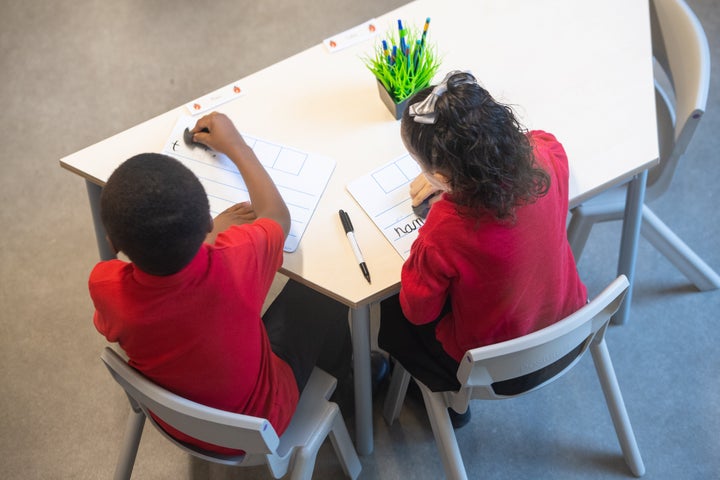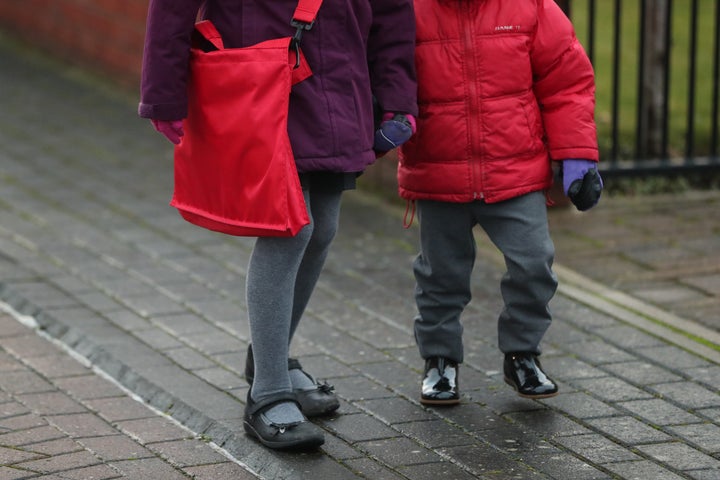
Teachers have reported significantly higher attendance rates in primary schools compared to the first lockdown, with “full” classrooms and staff torn between online and classroom learning.
After weeks of uncertainty, Boris Johnson closed every school in England on Monday when he announced a national lockdown – a step which had not been taken since the first days of the pandemic in March.
But despite schools remaining open only for vulnerable children and the children of key workers, alongside a new category for children unable to study at home, teachers and parents have reported much higher rates of attendance so far during the current lockdown.
With rising numbers, they say it is becoming impossible to social distance – with some classrooms indistinguishable from those during the autumn terms when schools were fully open.
Kate Chisholm, a primary headteacher in Darlington, runs the local Primary Heads Forum encompassing 38 schools in the area. She said the schools in her area had moved, on average, from 5% attendance in March to 30% in January, but said in some schools this had risen as high as 70%.
She said while the government appeared to have “closed schools to appease parents”, in reality many classrooms were “as full as possible.”
Peter King, the head at Mowden Infant and Junior Schools in Darlington said attendance had increased five-fold in his school between the first lockdown in March and the current one. With a pupil population of around 600, he had 157 pupils in classes on Thursday.
He said: “I can see it as I’m driving in on the motorway to get into work and when I see the numbers we have in school, it’s not a lockdown like the one we saw in March.
“Some of that is probably a bit less fear, even with the new strain, but also it seems that there are clearly many more jobs now being deemed as critical work compared to the first lockdown.

“We only have a minority of pupils in but that is still a big chunk when you are trying to deliver online learning as well to the majority, which means there’s just no slack in the system.”
The Department for Education (DfE) has said the scope of workers classed as critical workers had only expanded very slightly between March and January, to allow EU transition workers to be classed as critical workers.
With some teachers at home running online lessons it means that some of those still in the classroom are more overstretched than ever, managing classes of 30 despite the lockdown.
Chisholm said: “There are only so many teachers. If a teacher is in school teaching then they can’t be online at the same time, we don’t have the university technology where you can livestream a lesson like that. We just don’t have the money or equipment.
“If you’re a two-form entry school, you’ve got one teacher who can be in school teaching that year group and another at home doing the online learning. Headteachers are having to have classes of 30 so they can still do home learning.
“It’s crazy – in some schools there’s absolutely no difference in terms of keeping children socially distanced.”
King also reported similar issues in his own school, with some vulnerable teachers making the decision to come into work “out of stoicism” in order to keep lessons running for their pupils.
The head said that his school had implemented a rule during the first lockdown that meant both parents had to be key workers in order to send their children into school. This lockdown, he said, the guidance made it clear that schools must open to children with just one critical worker.
He explained: “I was worried the first time that lockdown wasn’t really going to be lockdown and in March there was a lot more fear and unknowns around the virus, so while there wasn’t technically the law we stuck out and said both parents had to be key workers which suppressed our numbers a little bit.
“It rarely went above 30 [pupils in school] in the first lockdown, but now we have about five times as many.
“It was more than implied in March [that only one parent had to be a key worker] but the government has really insisted on it this time. If you take out hospitality, beauty or leisure, it’s very hard not to be a critical worker, and that’s the difficulty we’re facing.
“I understand why parents may be feeling the pressures in their own domestic circumstances but it creates a pressure for us that may not be compatible with reducing the spread of the virus.”
Concerns have also been raised about the government’s change in advice, allowing children who do not have access to the technology or space to study at home can go into school.
Leading charity the Child Poverty Action Group have questioned the approach, saying the plan “trades off” access to school and safety.
“The government is under a lot of pressure to be all things to all people, which means that in a school management scenario we have to deal with those tensions in a very direct way.”
A spokesperson said: “The DfE has said that kids without devices or quiet space to study can go into school during lockdown.
“This trades off education with health inequalities – without devices or data, these kids need to be in school, but this puts the health of their community at greater risk. Far better to take urgent action to equip all children to access the curriculum at home.”
Chisholm said that in a survey of the 38 primary schools in the forum’s network, a maximum 200 laptops had been received in total. Her school had received just 13 laptops and two dongles, despite the ward its in being classed within the bottom 1% of deprivation in the entire country.
“You’re either closing schools or you’re not. In my catchment, if all children who were classed as digitally deprived were sent into school I’d have a full school,”: Chisholm said.
She added: “You’d think in a school such as mine we’d have an abundance of technology thrown at us so that we can encourage parents to keep that learning going. Our parents are some of the least able to facilitate learning at home.
“We were told by the government last term that a bubble of 11 pupils we had self-isolating couldn’t get laptops because there needed to be 12 or more pupils off to qualify.
“We are skint, we can’t afford to buy them laptops, so we had to print everything off into packs of paper which increases the contagion risk because parents were having to come in and collect the work.”
Situated in the north-east of England, Chisholm said there was little evidence of the government’s “levelling up” agenda in her area, despite it being classed as “significantly deprived”.
She added: “The government keep talking about the deprivation gap and the north-east falling behind, but they’re just not supporting us at all.”
King emphasised a similar point, telling HuffPost UK: “My worry is that the number [of pupils] will keep creeping up and up and up until we reach a breaking point, and at the moment I just don’t know where that number will get to.
“The government is under a lot of pressure to be all things to all people, which means that in a school management scenario we have to deal with those tensions in a very direct way.”
King also said that the government’s emphasis on sending out hundreds of thousands of devices to schools across the country had potentially misled parents into believing that the process was as simple as applying to the school for a laptop for their child.
He explained: “Non-vulnerable children’s families are contacting schools for help with laptops too because the prime minister mentioned in his announcement that they were available.
“I think there’s a perception out there that we can just order them when parents request them, which unfortunately isn’t the case and can lead to a bit of tension.”
In the meantime, teachers at schools like Mowden are taking measures such as staggering video lesson times to allow families with more than one child in different year groups to follow their own lessons if only one device is available.
While both Chisholm and King run schools in Darlington, a quick look at social media reveals that the issue of capacity in schools has materialised across the country.
A Department for Education spokesperson said: “Schools are open for vulnerable children and the children of critical workers. We expect schools to work with families to ensure all critical worker children are given access to a place if this is required.
“If critical workers can work from home and look after their children at the same time then they should do so, but otherwise this provision is in place to enable them to provide vital services.
“The protective measures that schools have been following throughout the autumn terms remain in place to help protect staff and students, while the national lockdown helps reduce transmission in the wider community.”
